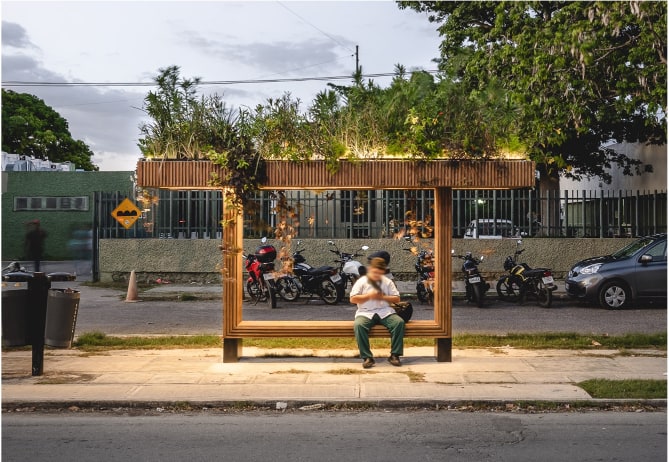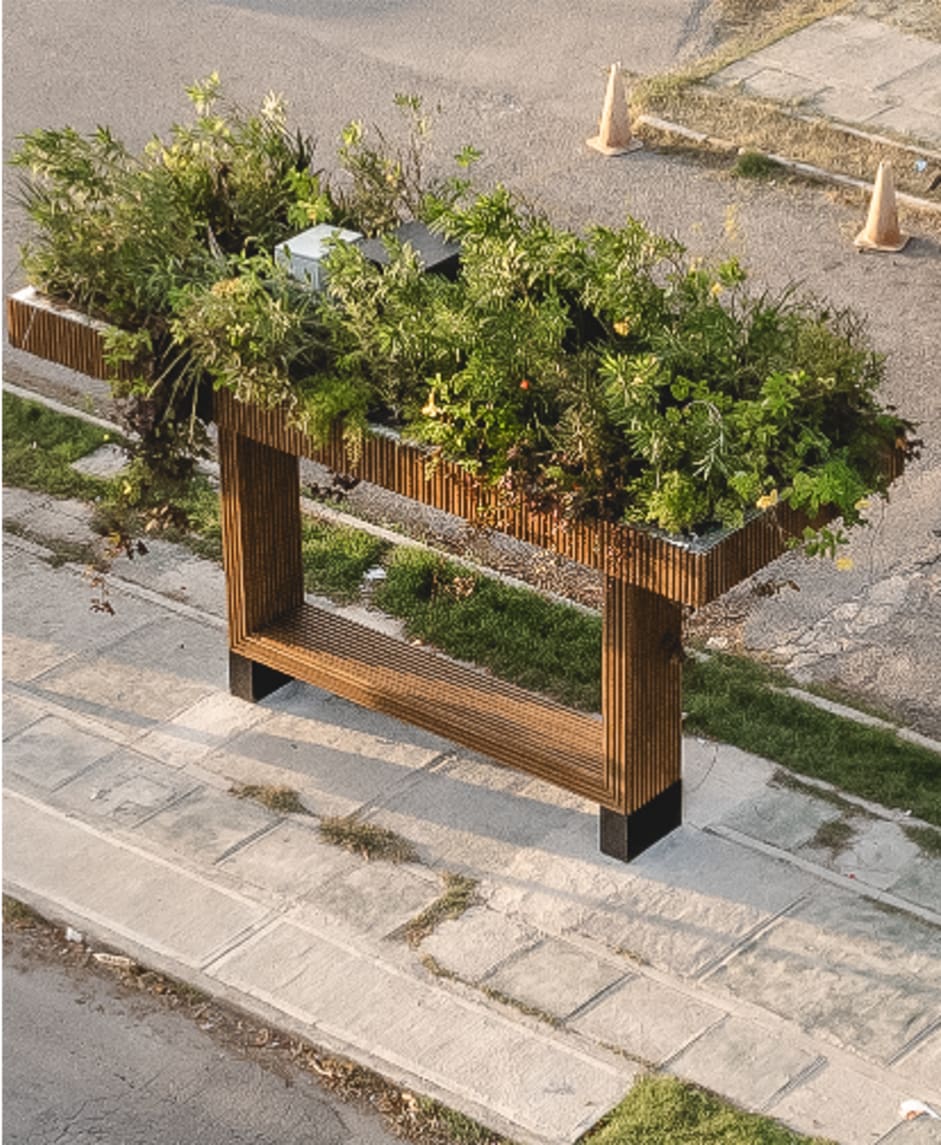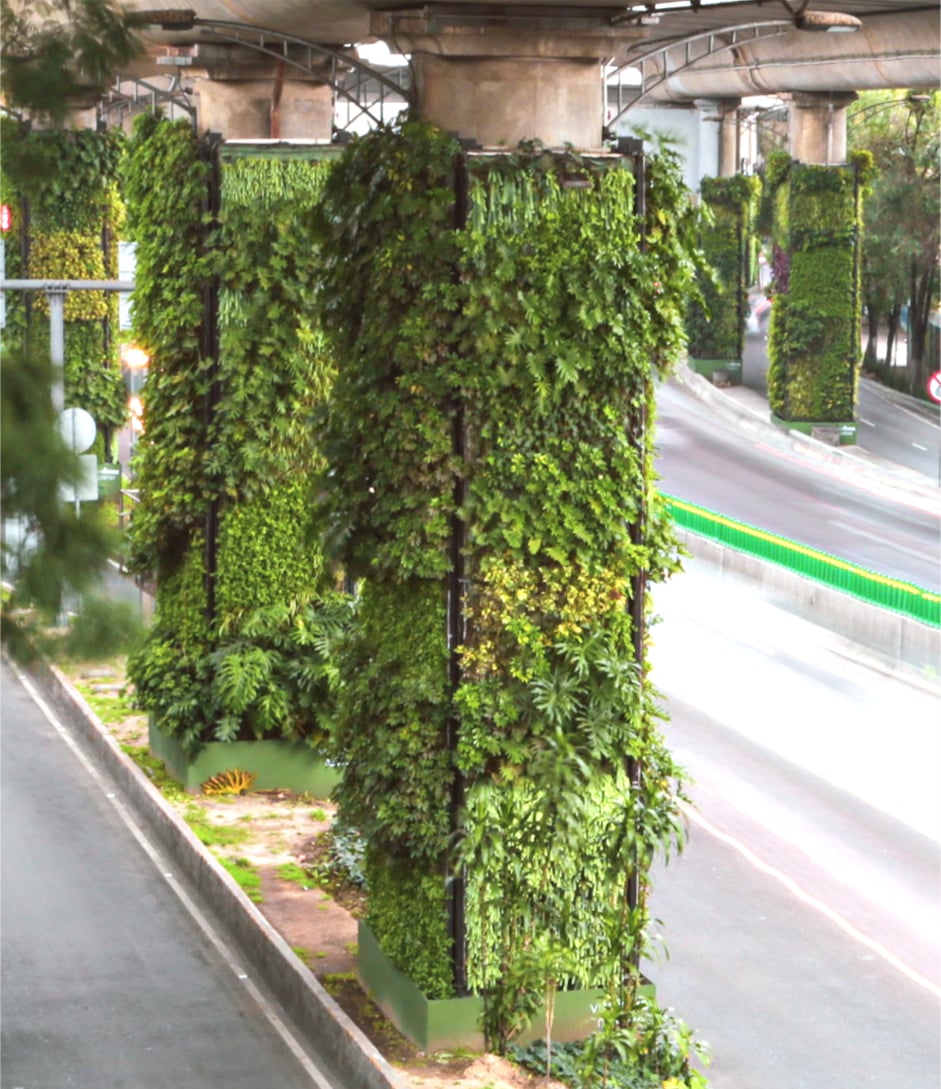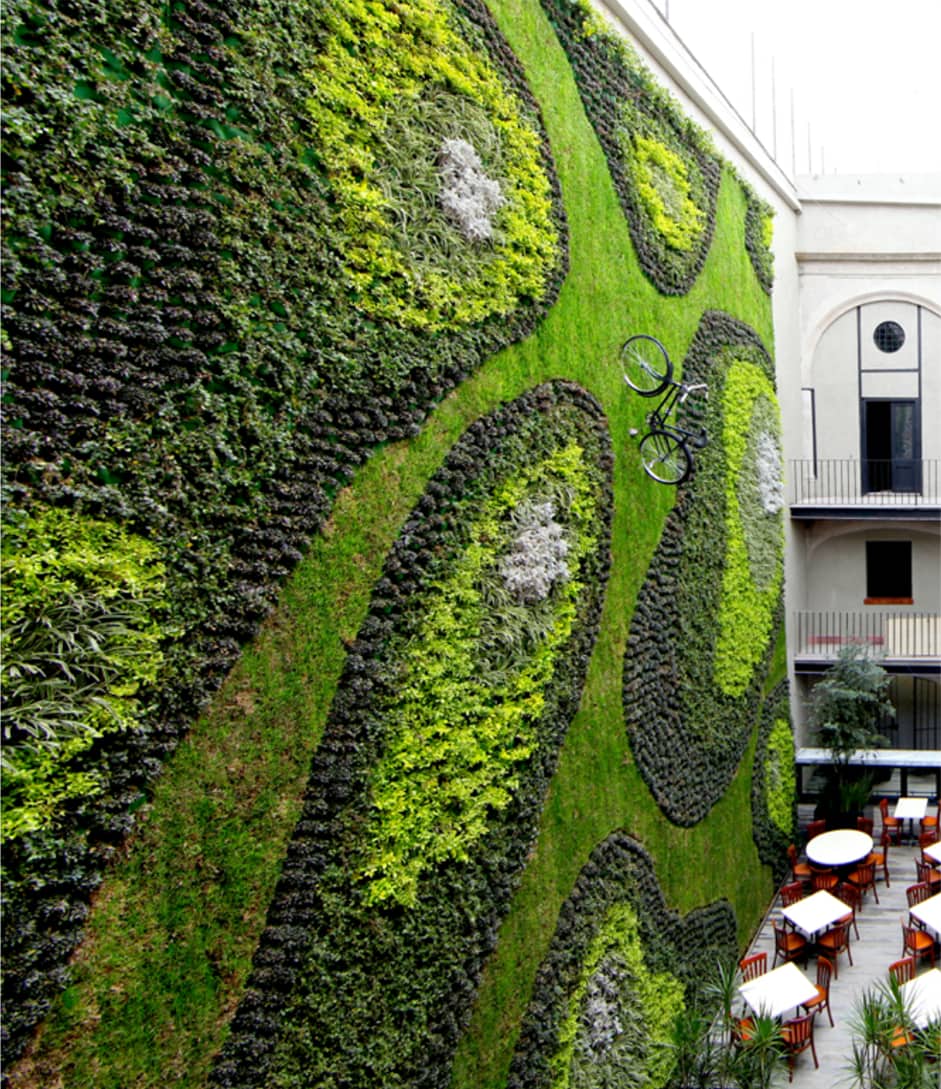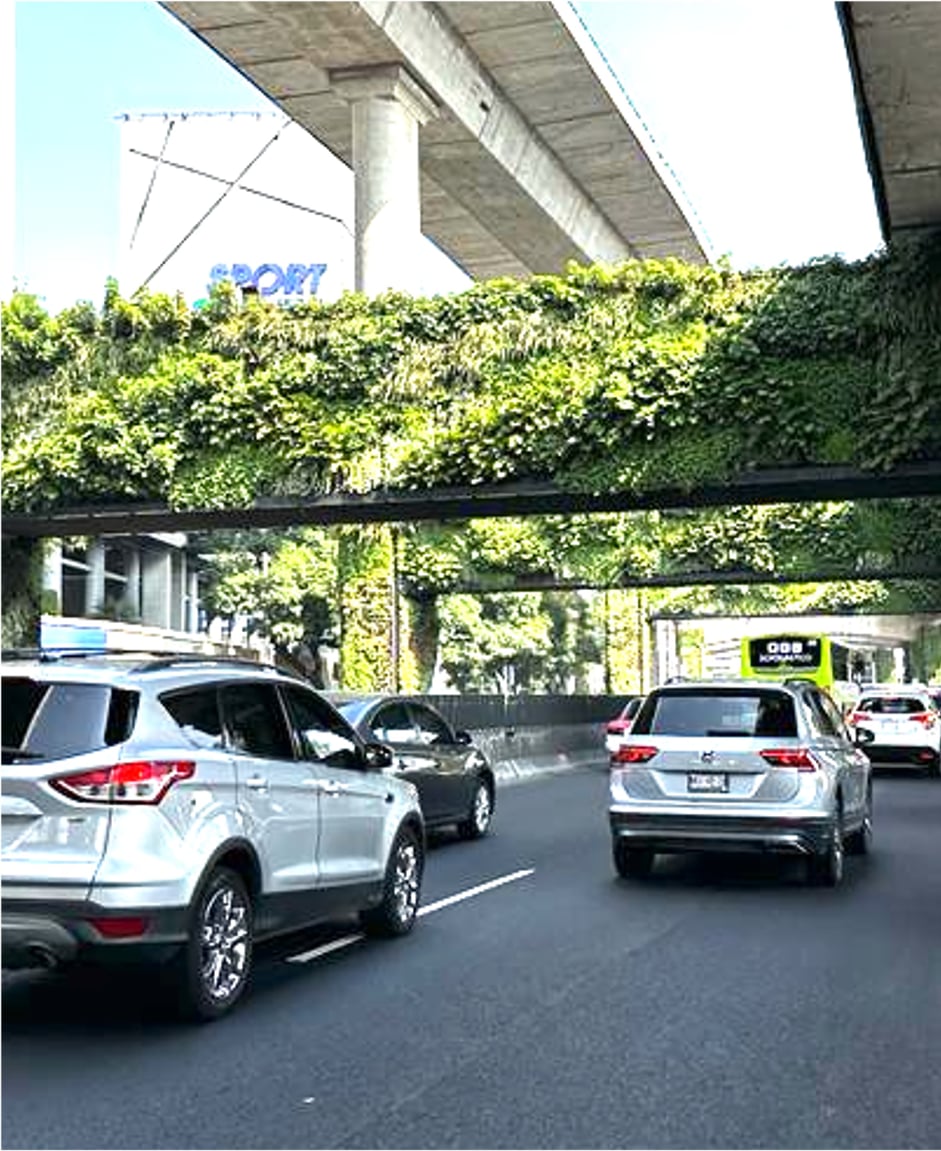REVIVING POLLINATOR PATHWAYS
Pollinators are vital to the reproduction of countless plant species, playing a crucial role in maintaining ecosystems and ensuring food security. Unfortunately, many pollinator species are endangered due to habitat loss and urbanization. The Green Bus Shelters project addresses this issue by creating biological corridors in urban areas. These shelters are designed with native plant palettes that attract and support pollinators, fostering the reproduction of local plant species and enhancing biodiversity in cities.
INNOVATIVE IRRIGATION WITH ATMOSPHERIC WATER
One of the most groundbreaking features of the Green Bus Shelters is their proprietary irrigation system, which produces water from atmospheric humidity. This technology generates approximately 50 liters of water per day, entirely sourced from the environment. The water is then distributed through a fully automated irrigation system that operates at night, ensuring that the plants remain hydrated without drawing from municipal water supplies.
SUSTAINABLE MATERIALS FOR A CIRCULAR ECONOMY
The Green Bus Shelters are constructed using natural, recycled, and recyclable materials, supporting the principles of a circular economy. By minimizing the environmental footprint of production and ensuring the materials can be reintegrated into new life cycles, this project sets a benchmark for sustainable urban infrastructure.
COOLING URBAN TEMPERATURES
The green roofs of the shelters provide more than just an inviting aesthetic—they also contribute to reducing temperatures for commuters waiting for public transportation. The natural vegetation insulates the shelters, creating a cooler microclimate and reducing ambient temperatures by several degrees Celsius. This not only improves comfort for commuters but also helps mitigate the urban heat island effect.
ENHANCED COMMUTER EXPERIENCE
Green Bus Shelters go beyond ecological benefits to enhance the everyday experience of city dwellers. Each shelter is equipped with LED lighting and functions as a Wi-Fi hotspot, allowing commuters to stay connected and entertained while waiting for their transport. By combining practicality with sustainability, the project redefines the traditional bus stop as a multipurpose urban space.
KEY BENEFITS
- Biodiversity Support: Creates pollinator-friendly spaces with endemic plant species to support and revive local ecosystems.
- Water Innovation: Produces water from atmospheric humidity, saving precious potable water resources.
- Sustainable Materials: Built with recyclable and recycled materials, aligning with circular economy principles.
- Temperature Regulation: Reduces heat for commuters, improving comfort and reducing urban heat island effects.
- Technological Integration: Offers Wi-Fi hotspots and modern lighting for a more enjoyable and functional commuter experience.
A MODEL FOR URBAN INFRASTRUCTURE
The Green Bus Shelters exemplify how urban infrastructure can harmonize ecological, technological, and social goals. By supporting pollinator populations, reducing resource consumption, and enhancing commuter comfort, this project provides a forward-thinking solution to urban challenges.
BRIDGING NATURE AND TECHNOLOGY
Green Bus Shelters demonstrate VIAVERDE’s commitment to innovation and sustainability. This project serves as a reminder that even the simplest urban fixtures can contribute significantly to ecological restoration, climate resilience, and the everyday lives of city residents.

